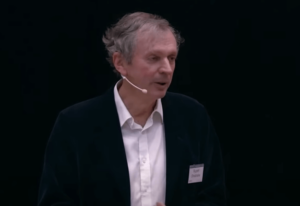Rupert Sheldrake: Experiments and Scientific Criticism


Reviewed and approved by the psychologist Sergio De Dios González
Rupert Sheldrake’s experiments have generated strong controversy. This is mainly because they haven’t been replicated which prevents the truth or falsity of his hypotheses from being proven. Even so, his theories have given much to talk about and are, without a doubt, really interesting proposals concerning the human mind.
Rupert Sheldrake studied Natural Sciences at Cambridge University, UK. At the end of his studies, he received the prize for University Botany in 1963. He then studied philosophy and history of science at Harvard University (USA) and later obtained a doctorate in biochemistry, also at Cambridge.
He later went on to occupy a number of important positions. One of them was as a consultant at the International Crops Research Institute for the Semi-Arid Tropics (ICRISAT) in Hyderabad, India. During his stay in India, he came into contact with the monk, Bede Griffiths, in Tamil Nadu. This meeting turned his work around. In fact, in 1981, Rupert Sheldrake began his experiments.
“Darwin thought that animals and plants, rather than species, could be considered as inhabitants.”
-Rupert Sheldrake-

The basis of Rupert Sheldrake’s Experiments
Rupert Sheldrake’s experiments are definitely not easy to assimilate into the field of orthodox science. That’s because they’re close to concepts that have traditionally been rejected by the most positivist sectors. Indeed, ideas such as telepathy, extrasensory perception, and the like are present in his work. Even so, scientists, such as physicist David Bohm, have shown support for his work.
All of Rupert Sheldrake’s experiments are detailed in a thesis from the University of Granada (Spain). The details of the studies are shown, including the biological postulates from which they start and the way in which their hypotheses take shape.
The basis for Rupert Sheldrake’s experiments emerged in the 1920s at Harvard University. Researchers conducted a series of experiments with a group of rats. They basically taught them to escape from mazes at an increasingly faster rate. Surprisingly, the following generations of rats seemed to inherit this memory. In fact, from a young age, they escaped from similar mazes quicker than their counterparts.
This is an interesting topic but perhaps, for many, nothing more than that. However, a truly surprising event happened when laboratories identical to those at Harvard in Australia and Scotland conducted similar experiments. They used rats that were unconnected to those used in the United States.
The researchers found that these rats also learned to negotiate the mazes as quickly as those in the earlier experiments.
Sheldrake’s discoveries
Rupert Sheldrake began experimenting with animals and achieved results that weren’t welcomed by the orthodox scientific field. He pointed out that forms of telepathic communication between individuals of the same species existed. This could explain the case of the Harvard rats. Later, the biologist pointed out that it could also happen in humans.
One of Rupert Sheldrake’s most famous experiments is known as the telephone telepathy test. It consisted of gathering a group of people together and asking them to guess who was calling them when their phone rang. The caller could be one of four people.
During the first round of the experiment, the average success rate was 40 percent. During subsequent rounds, it was found that the presumed telepathy was more effective when the volunteer felt more confident and had a strong emotional connection with the caller. Under those conditions, the correct answers increased up to 85 percent.

Truth or quackery?
Rupert Sheldrake conducted many other experiments. One involved pets that could apparently read their owners’ minds. As a matter of fact, he’s still experimenting today and anyone who wants to participate can join him through his personal website.
From the result of his experiments, Sheldrake concluded that certain realities exist which he calls morphic fields. These are present and operate in all matter, from minerals to humans. The basic idea is that learning, or change, is transmitted between the members of a species, by a telepathic mechanism, without the mediation of will.
Sheldrake has been highly questioned by various scientists who, for the most part, define his theory as pseudoscience. However, Lee Smolin, a quantum physicist, has recently proposed an idea similar to that of Sheldrake. He calls it the principle of precedence.
Editors note: The experiments that appear in this article have been highly criticized by the scientific field and subject to intense debate. Therefore, we encourage the reader to investigate and draw their own conclusions.
All cited sources were thoroughly reviewed by our team to ensure their quality, reliability, currency, and validity. The bibliography of this article was considered reliable and of academic or scientific accuracy.
Sheldrake, R., Smart, P., & Avraamides, L. (2015). Rupert Sheldrake. Explore: The Journal of Science and Healing, 11(4), 310-319.
This text is provided for informational purposes only and does not replace consultation with a professional. If in doubt, consult your specialist.








